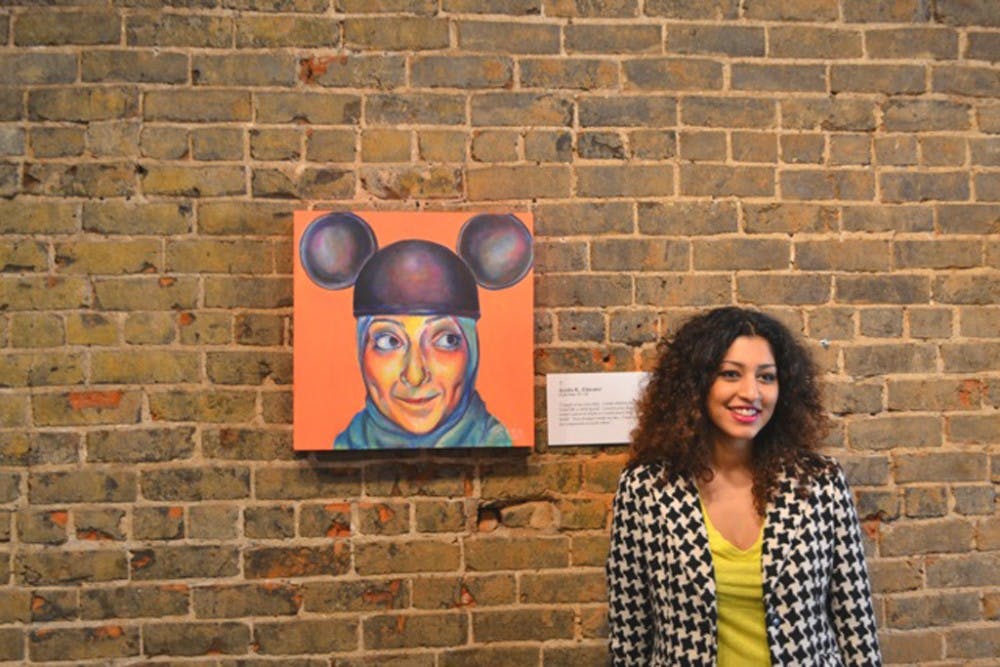Saba Barnard’s Technicolor Muslimah, now on view at the Carrack Modern Art, is a series of 12 portraits portraying Muslim women as she sees them. A response to contemporary representations of Muslim women as “exotic,” “oppressed” or “other,” Barnard’s collection sheds light on her own perception of what it means to be a Muslim woman in America.
The acrylic paintings feature covered models—many whom Barnard knows personally—alongside pop-culture pieces not normally associated with Muslim women. Be it a can of Diet Coke, heart-shaped sunglasses or oversized headphones, each object speaks for itself in the painting while contributing to the model’s personality as key to the overall composition.
The artist used these props to connect the models to American pop culture, extending the notion that our vision of a covered woman changes when she playfully poses in a Mickey Mouse hat, for example. The paintings come to life with Barnard’s use of exaggerated technicolor to underscore shadows and highlights. When coupled with the models’ expressions, the color creates a light-hearted tone that pervades the set of paintings.
“The girls in the paintings are just so expressive,” Barnard said. “The way I saw them in the media was never like this, which was untrue to how I knew them.”
Barnard discussed how Western society tends to view women who wear headscarves as subjects of patriarchy and oppression. This fixation, she added, prevents us from seeing how dynamic these women truly are. With her art, Barnard hopes to widen the Western view of Muslim women and counter the essentializing perceptions she sees in her own life.
“Though this is a fairly small body of work, each piece is so powerful on its own and it demands the space,” said Laura Ritchie, cofounder and director of the Carrack Modern Art Gallery. “With each portrait, the viewer is forced to face the woman, spend time with her and really get to know her,” she added.
The series’ models were in sync with Barnard’s vision from the very beginning. Amna Baloch, model and undergraduate at the University of North Carolina at Chapel Hill commented on the political motivations behind the series.
“We’ve grown tired of the Orientalist way of looking at Islam and the East,” she said, referring to the reductive approach to understanding Eastern cultures. “We’re trying to take ownership of our brand of American Islam, and it gets tiring to be associated with a different kind of Islam that we ourselves are not familiar with.”
The final piece departs from the rest of the series, as the subject lacks the color or props found in the other paintings. Instead, she is portrayed photographically with special attention to her firm gaze. Barnard notes that the upbeat portrayal of Muslim women throughout the series highlights only one aspect of their personalities. Though this playful portrayal was necessary for Barnard to get her point across, this final painting is stripped of embellishment; she is just a woman, a blank slate on the path toward self-definition. Void of distractions, the painting forces us to question our perceptions of this woman, now that the colors, ornaments and distinctive facial expressions have left the scene.
“To some extent, I grew up with all of the women featured in this series, and I tried to capture who they really are,” Barnard said.
Technicolor Muslimah is on display at the Carrack Modern Art Gallery in Downtown Durham through March 31. Admission is free.
Get The Chronicle straight to your inbox
Signup for our weekly newsletter. Cancel at any time.

